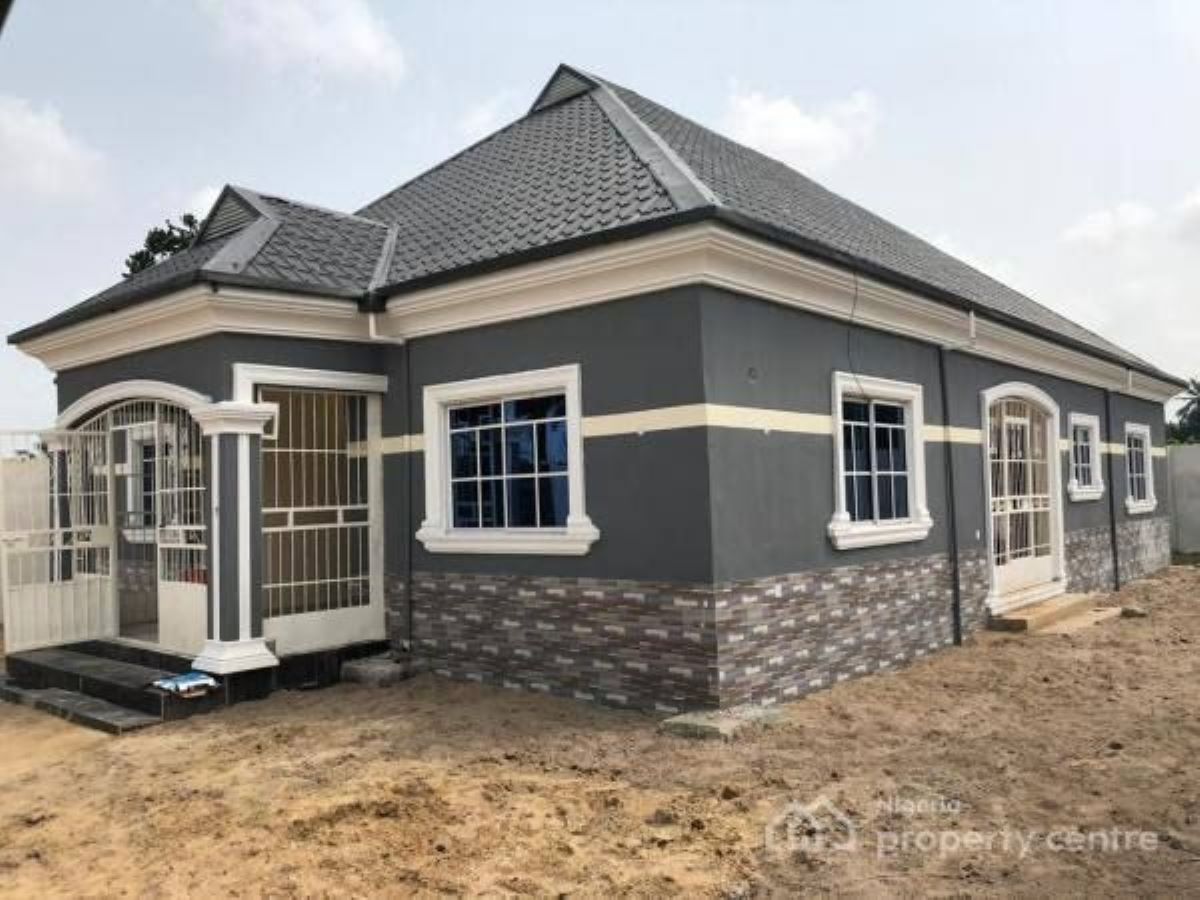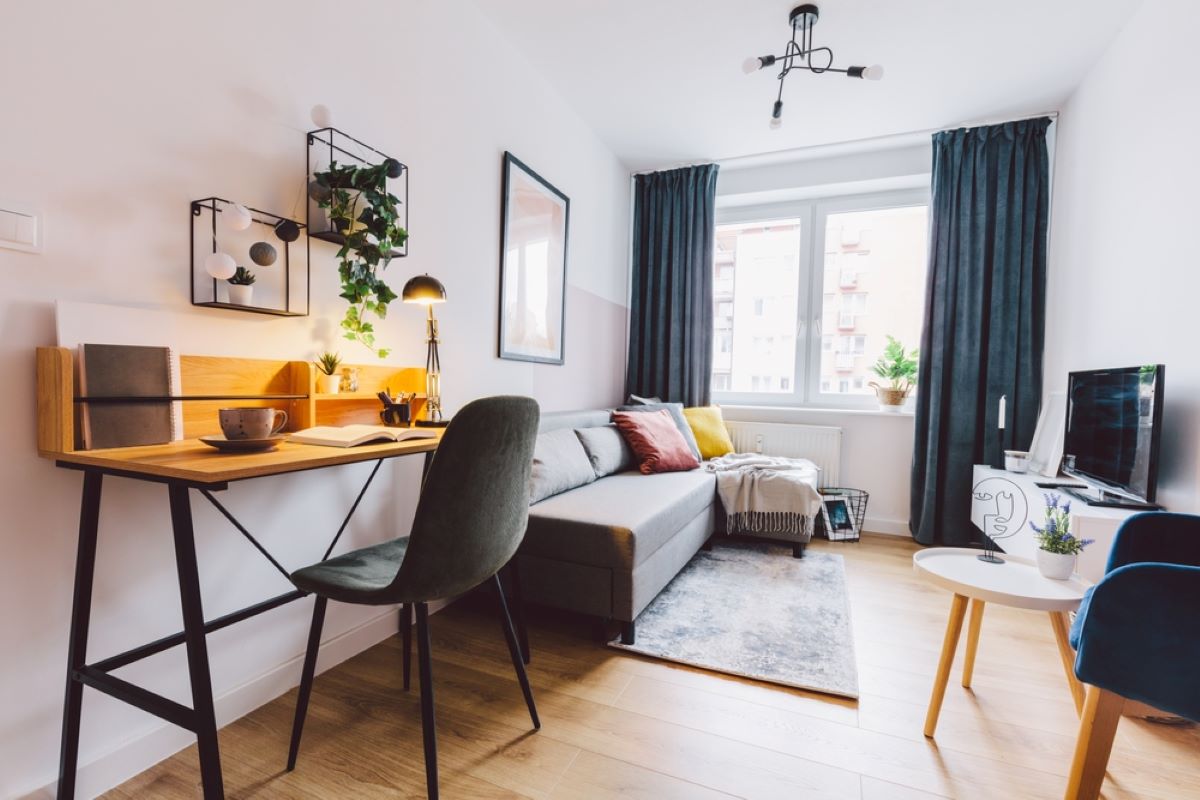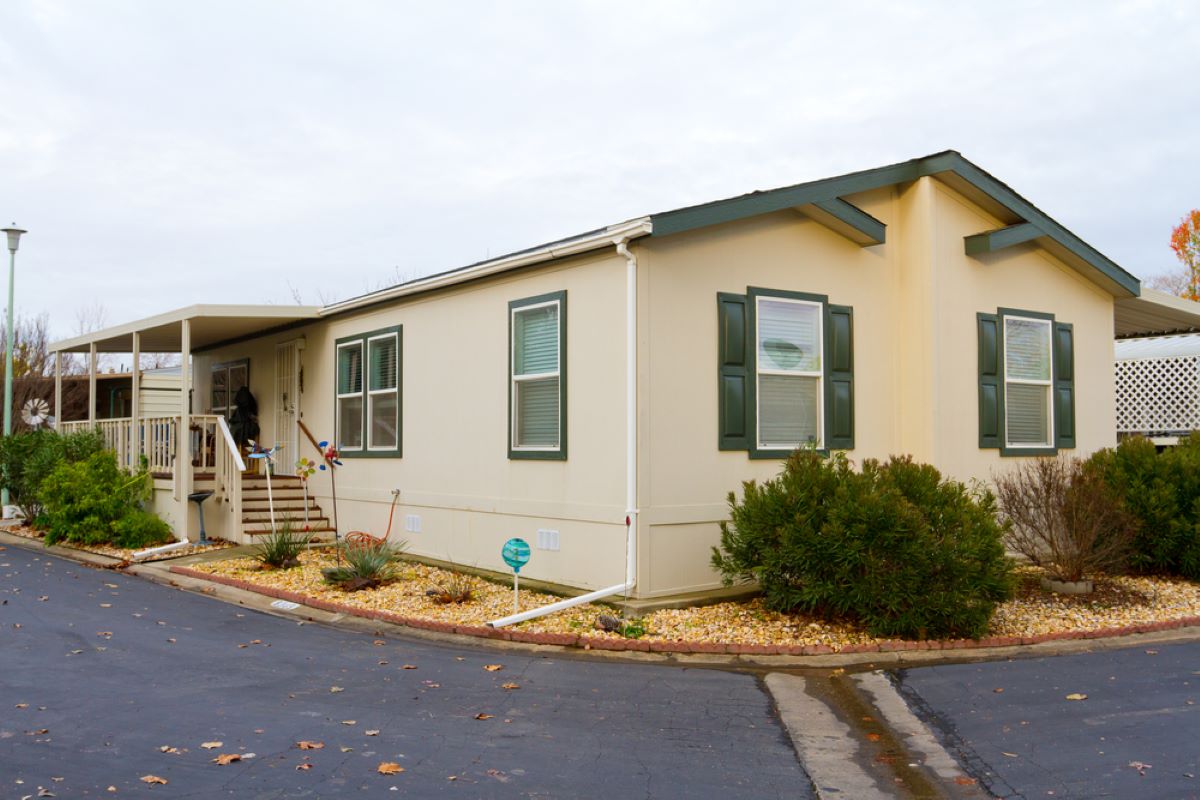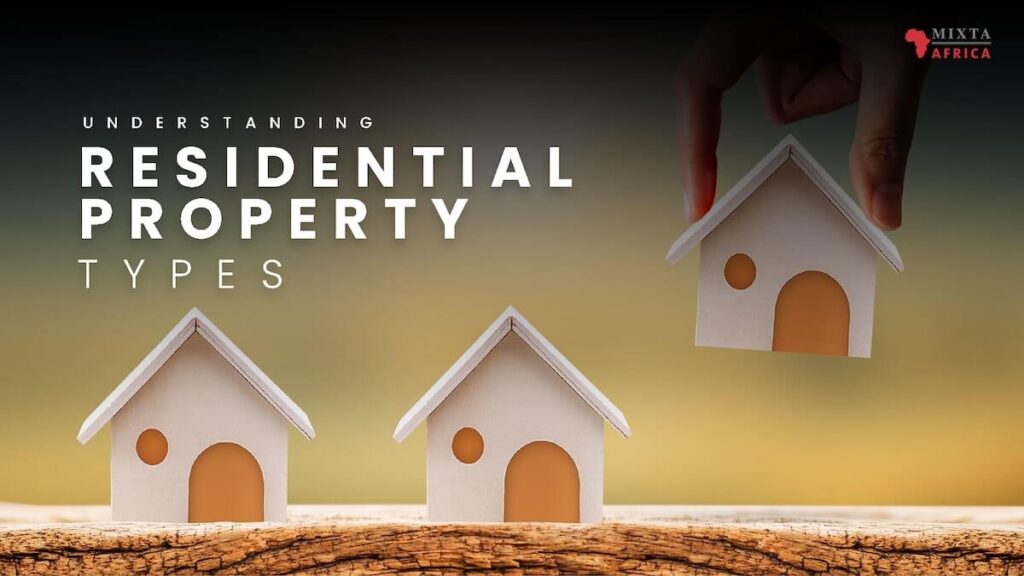Don’t let real estate jargon hold you back!
This guide breaks down different residential building types in simple terms, making you a homebuying guru (or a savvy renter).
Knowing your options is key, whether you’re diving into the market or just curious.
So ditch the ignorance and gain real estate confidence – let’s talk about your perfect place!
4 Different Types of Residential Buildings
Residential buildings come in various forms to suit different lifestyles and needs.
The main types of residential buildings include:
-
Single-family homes
-
Townhouses
-
Apartments
-
Manufactured homes
1. Single-Family Homes

Image Credit: Pinterest
A single-family home is a standalone structure designed exclusively for one family or household.
Picture this: a lovely house situated on its plot of land, surrounded by a spacious yard, and separated from its neighbors by a fence.
Sound familiar? That’s a classic example of a single-family home.
Single-family homes are usually characterized by private entrances, yards, and amenities.
They typically don’t share walls with other homes, giving you a greater degree of privacy.
But did you know that not all single-family homes are the same?
There are several types, including ranch-style homes, split-level houses, and bungalows.
- Ranch-Style Homes: These are single-story houses with a long, low profile. They typically feature open-concept floor plans and large windows.
- Split-Level Homes: These homes have multiple floors at different levels. They usually feature a main level for common living areas, with bedrooms and additional spaces either a few steps up or down from the main level.
- Bungalows: Bungalows are typically small, single-story homes with a compact layout. They often feature large porches and low-pitched roofs.
Now, let’s talk about the advantages and disadvantages of owning a single-family home.
Pros:
- Privacy: With no shared walls or common areas, you’ll enjoy the highest degree of privacy.
- Control: You have the freedom to renovate or make changes to your home as you see fit, within local regulations, of course.
- Outdoor Space: Most single-family homes come with their yards, offering outdoor space for relaxation, play, or gardening.
Cons:
- Maintenance: As a homeowner, you’re responsible for all maintenance, which can be time-consuming and costly.
- Lack of Amenities: Unlike condos or townhomes, single-family homes rarely come with shared amenities like a pool or fitness center.
- Cost: In many markets, single-family homes are more expensive than other property types.
2. Townhouses

Imagine a row of neatly arranged homes, each multi-storied, with similar facades and shared walls.
What you’re envisioning are townhouses – a distinctive residential property type that merges the concepts of individual ownership with community living.
A townhouse is a style of housing where each unit, spanning multiple floors, shares one or more walls with the adjacent unit(s).
They typically have their separate entrances, often include a small yard or patio, and can be found in a variety of settings, from bustling urban streets to quiet suburban neighborhoods.
Much like single-family homes, townhouses also come in several types, including attached, detached, and row houses.
- Attached Townhouses: These townhouses share a common wall with at least one other townhouse, and are connected on both sides. They are often found in larger townhouse complexes.
- Detached Townhouses: These are standalone townhouses. They maintain the architectural style and layout of a typical townhouse but do not share any walls with neighboring homes.
- Row Houses: Row houses are a series of townhouses connected in a row. They share side walls and often have similar or identical architectural designs.
Owning a townhouse comes with its own set of benefits and potential drawbacks.
Pros:
- Less Maintenance: Since many townhouse communities have homeowners associations (HOAs), they usually take care of external maintenance, like landscaping and exterior repairs.
- Community Feels: With shared walls and common areas, townhouse communities often foster a greater sense of community compared to detached homes.
- Cost-Effective: Townhouses can be more affordable than single-family homes, especially in high-cost urban areas.
Cons:
- HOA Fees: If your townhouse has an HOA, you’ll likely pay monthly fees for the maintenance and services they provide.
- Less Privacy: Sharing walls with neighbors can mean less privacy compared to a detached single-family home.
- Potential for Noise: Because units share walls, there can be more potential for noise disturbance from neighbors.
3. Apartments

Let’s navigate now to the vibrant world of apartments.
They are self-contained residential units located within a building or a house.
Unlike other types of properties we’ve discussed, apartments are generally rented, not owned.
Picture a multi-story building, each floor partitioned into individual units – that’s the quintessential apartment setup.
An apartment typically includes a living area, kitchen, bathroom, and one or more bedrooms.
The configuration of these rooms determines the type of apartment, such as a studio, one-bedroom, or two-bedroom apartment.
- Studio Apartments: These are compact, one-room apartments with a combined living and sleeping area. They often include a separate bathroom and a small kitchen or kitchenette.
- One-Bedroom Apartments: As the name suggests, these apartments have separate bedrooms along with a living area, kitchen, and bathroom.
- Two-Bedroom Apartments: These apartments feature two separate bedrooms in addition to a living area, kitchen, and bathroom.
Now, let’s explore some pros and cons of renting an apartment.
Pros:
- Maintenance: One of the biggest advantages of renting an apartment is that maintenance, such as repairs or yard work, is generally the landlord’s responsibility.
- Amenities: Many apartment complexes come with shared amenities, such as a pool, fitness center, laundry facilities, and security systems.
- Flexibility: Renting an apartment often involves less commitment than buying a home, making it a flexible option for those who move frequently.
Cons:
- Space Limitations: Apartments are generally smaller than single-family homes or townhouses, which could pose space constraints.
- No Equity: When you rent, you’re not building equity as you would when you buy a property.
- Less Control: You may be limited in your ability to customize your living space, and you must abide by the landlord’s rules.
4. Manufactured Homes

Let’s shift gears a bit and talk about a unique, affordable type of housing: manufactured homes.
These homes are pre-fabricated in a factory and then transported to their intended location.
This sets them apart from traditional homes, which are built on-site.
Manufactured homes often feature a single or multi-section design and sit on a steel chassis for transport.
Manufactured homes come in various types, with the most common being mobile homes and modular homes.
- Mobile Homes: These homes are built on a movable steel chassis and can be single or multi-section. They’re designed to be relatively easy to move, though many homeowners choose to keep them at a permanent location.
- Modular Homes: While also pre-fabricated, modular homes are assembled on a permanent foundation and aren’t designed to be moved after installation. They are often larger and more complex than mobile homes.
Now, let’s consider the pros and cons of owning a manufactured home.
Pros:
- Affordability: Manufactured homes typically cost less per square foot than traditional homes, making them a more affordable housing option.
- Speed of Construction: Since these homes are pre-built in a factory, they can be constructed much faster than traditional on-site homes.
- Flexibility: Especially with mobile homes, you have the option to relocate your home if needed.
Cons:
- Depreciation: Unlike traditional homes, manufactured homes may depreciate over time, similar to vehicles.
- Land Ownership: Unless you own the land where your manufactured home is located, you might need to pay a monthly rental fee for the lot.
- Financing and Insurance: It can sometimes be harder to secure financing and insurance for manufactured homes compared to traditional homes.
Factors to Consider When Choosing a Residential Property Type
Whether you’re a first-time homebuyer, looking to invest in real estate, or simply exploring your options, choosing the right residential property type is a decision that should be carefully considered.
Various factors play into this decision, each as unique as you are.
Let’s go through some of the key factors you should consider.
1. Location
Location, they say, is everything in real estate.
You’ll want to consider the proximity to work, schools, shopping, hospitals, and other amenities.
Think about the kind of neighborhood and community you want to live in – urban, suburban, or rural.
Each will offer a different lifestyle and potentially different property types.
2. Budget
Your budget is likely one of the most significant factors.
Remember, it’s not just the cost of the home itself but also property taxes, homeowners insurance, potential homeowners association (HOA) fees, and maintenance costs.
Be sure to fully understand your financial capacity before making a decision.
3. Size and Layout
Consider your spatial needs. How many bedrooms and bathrooms do you need?
Do you want a yard, or would you prefer a smaller outdoor space that requires less maintenance?
Do you need a home office or a guest room?
Answering these questions will help you determine the size and layout that best suits your lifestyle.
4. Amenities
Amenities can greatly enhance your quality of life.
If you love to swim, for example, a community pool might be high on your list of must-haves.
Or maybe you want a home gym or a dedicated play area for kids.
Keep in mind, however, that more amenities might mean higher HOA fees.
5. Maintenance Responsibilities
Different property types require different levels of maintenance.
A single-family home may offer more freedom to customize your space, but it also means you’re responsible for all repairs and yard work.
Conversely, an apartment or townhouse may require less maintenance, as the landlord or HOA often handles it.
Taking the time to consider these factors can significantly influence your satisfaction with your housing decision.
Remember, the best choice is one that fits both your needs and wants and aligns with your lifestyle and financial goals.
Tips for Buying and Selling Residential Property Types
The journey of buying or selling a residential property can be both exciting and daunting.
Regardless of the property type you choose, there are several crucial steps to ensure a successful transaction.
Let’s delve into some essential tips for buying and selling residential properties.
1. Finding a Reputable Real Estate Agent
Whether you’re buying or selling, a reputable real estate agent can be an invaluable ally.
They can provide expert advice, help you navigate the complex real estate market, and advocate for your best interests.
When choosing an agent, look for someone with a solid reputation, local market knowledge, and a track record of successful transactions.
2. Researching the Market and Comparable Properties
An understanding of the real estate market and comparable properties in your area can help you make informed decisions.
For sellers, this knowledge can guide your pricing strategy.
For buyers, it can help you determine a fair offer.
Analyze the prices of similar properties recently sold in your area, noting their condition, features, and time on the market.
3. Negotiating the Price and Terms of the Sale
Negotiation is a critical part of the real estate transaction process.
For sellers, this might involve negotiating the sale price, contingencies, closing costs, and the move-out date.
For buyers, negotiation can help you get the most value for your money.
A skilled real estate agent can be particularly valuable during this phase, providing expert advice and acting as a buffer between you and the other party.
4. Preparing the Property for Sale or Purchase
If you’re selling, preparing your property for sale can make it more appealing to potential buyers and could even increase its value.
This might involve deep cleaning, decluttering, staging, and making necessary repairs or upgrades.
For buyers, preparing for the purchase often involves securing financing, getting a home inspection, and potentially negotiating repairs or concessions based on the inspection results.
Financing Options for Residential Property Types
Choosing the right type of residential property is a significant decision, but it’s only one part of the equation.
How to finance your chosen property is another critical aspect to consider.
A variety of financing options exist, each with unique benefits and restrictions.
Let’s discuss some common financing options for residential properties.
1. Mortgages
A mortgage is a long-term loan that you can use to finance the purchase of a home.
In most cases, the loan term extends from 15 to 30 years, during which you’ll make regular monthly payments.
Mortgages can come with either fixed or adjustable interest rates.
Your property serves as collateral for the loan, meaning the lender could take possession if you fail to make payments.
2. Home Equity Loans
Home equity loans allow you to borrow against the value of your home that you own—this is your home equity.
These loans, essentially second mortgages, provide you with a lump sum of money that you repay in fixed installments over a specified term.
If you’re considering significant home improvements or need to consolidate high-interest debt, this could be a viable option.
3. Rent to Own
The rent-to-own approach provides an alternative route to homeownership.
You rent a property and have the option to purchase it after a certain period.
Part of your rent goes toward a future down payment on the house.
This can be a great solution if you’re not quite ready to buy a home outright, perhaps because you need time to accumulate savings or improve your credit score.
4. Reverse Mortgages
This option is designed for homeowners aged 62 and over, enabling them to convert a portion of their home equity into cash.
Rather than the homeowner making payments to a lender, as with a traditional mortgage, the lender makes payments to the homeowner.
The loan is repaid when the homeowner sells the house, moves out permanently, or passes away.
5. Government-Backed Loans
Government-backed loans are mortgages insured by the government, designed to help certain groups of individuals achieve homeownership.
In Nigeria, for example, the National Housing Fund (NHF) is a federal initiative intended to provide affordable housing financing to Nigerians.
The NHF offers loans with competitive interest rates for constructing, purchasing, or renovating residential homes.
To be eligible, you must be a Nigerian citizen and contribute 6% of your annual salary to the NHF.
Remember that selecting the right financing option is a long-term commitment that should align with your financial situation and goals.
It’s recommended to consult with a financial advisor or mortgage specialist like Mixta Africa to help make the best decision.
With the Duo by Mixta Africa Rent-to-own scheme, you can start renting a property today and become the proud owner tomorrow.
It’s an accessible and cost-effective way to achieve homeownership without the burden of a mortgage.
I advise that you don’t miss out on this incredible opportunity to become a homeowner affordably and conveniently.
Take the first step towards owning your dream home by filling out the interest form now!
Conclusion
So, there you have it!
Now you can confidently navigate the market, find your dream home (or that perfect investment property!), and impress your friends with your newfound knowledge.
Remember, the journey to real estate success starts with knowing your options.
Don’t hesitate to reach out to professionals for advice or to deepen your understanding.
Happy house hunting (or selling)!












